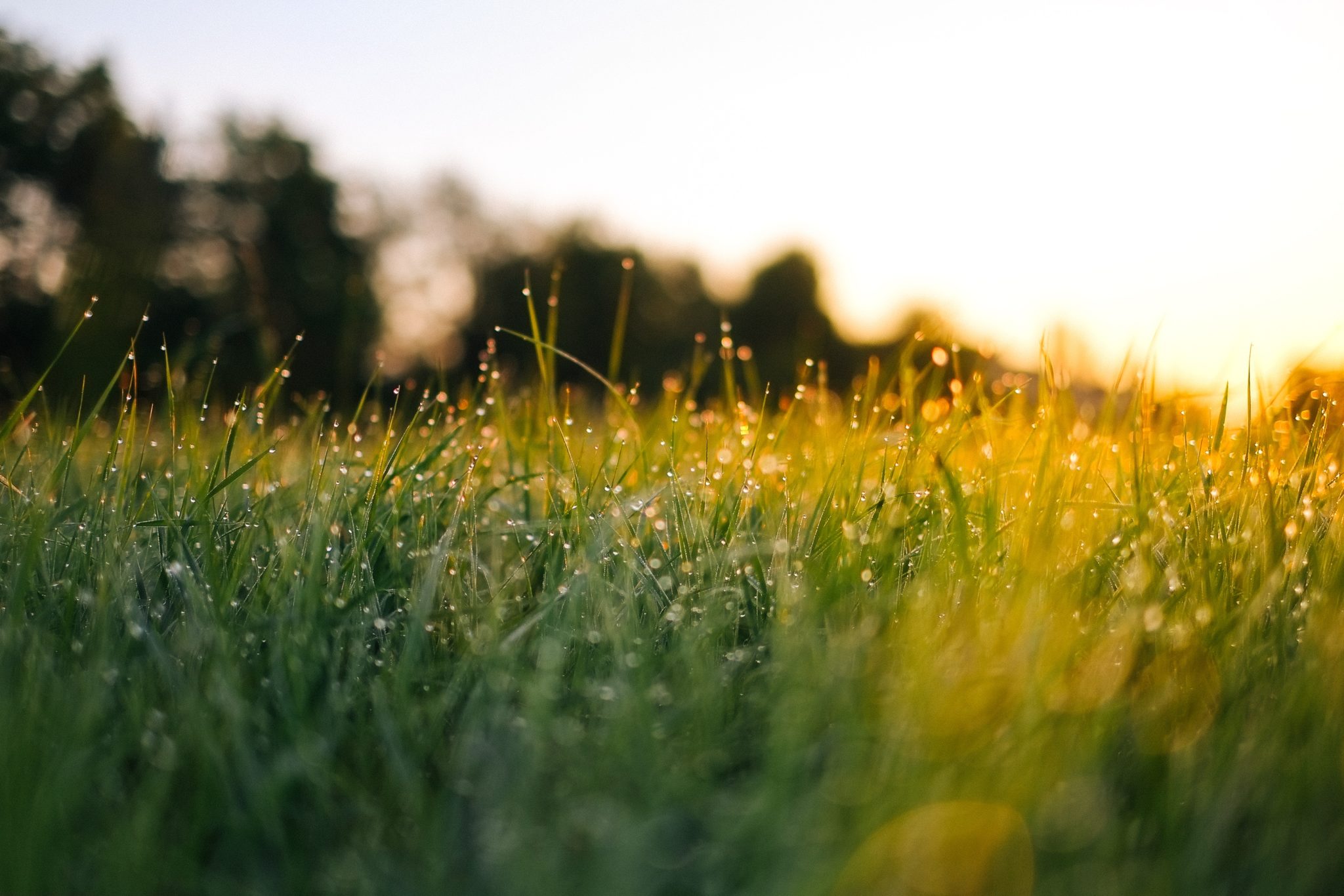Diseases and Problems to Watch for in Winter and Early Spring
Guest Post by Alfredo Martinez
Microdochium Patch in Golf Courses. When night temps dip below 50°F, Microdochium Patch (Fusarium Patch, pink snow mold) can be severe on new bentgrass and semi-dormant bermudagrass greens, and on greens overseeeded with Poa trivialis. Patches begin as small reddish-brown spots that can grow and coalesce into large blighted areas. White to pink mycelium (sometimes mistaken for Pythium or dollar spot) may appear during extended periods of rain and overcast weather. Cultural controls are the same as those listed above for Yellow Patch. Effective fungicides include products that contain azoxystrobin, fluoxastrobin, iprodione, metconazole, propiconazole, pyraclostrobin, thiophanate-methyl, triadimefon, trifloxystrobin, triticonazole or vinclozolin.
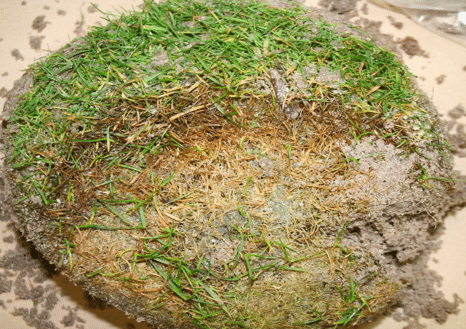
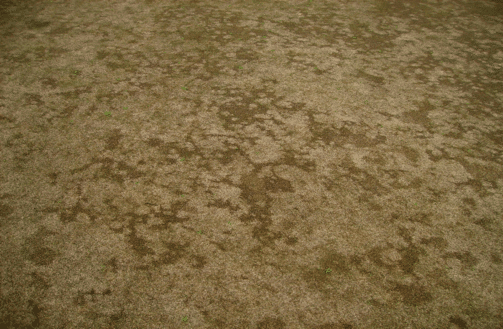
Slime Mold/Sooty Mold;Blackening observed in fully dormant zoysia and or bermudagrass after few rain events? We have received samples exhibiting olive green, gray to black molding affecting dormant tissue This condition is known as slime mold and /or “sooty mold” in other crops. The growth is superficial in nature. While the symptoms are worrisome, the condition does not affect turf further. Sooty mold is the result of secondary, saprophytic fungi and not considered a true disease. Sooty mold develops on dormant, senescing and/or damaged turf when prolonged wet, humid weather occurs. This symptomatology is probably going to go away as sunny, breeze weather resumes. This blackening should mow off rather quickly.
Yellow Patch (Rhizoctonia cerealis).Sporadic infections of R. cerealis(yellow patch) have been observed in ryegrass over-seeded bermudagrass turf swards and sport fields. The disease is rare in the state, but it thrives in extended periods of wet, cloudy weather. It is a cool-temperature disease (50 to 65°F). Disease development is significantly suppressed at temperatures lower than 45°F and greater than 75°F. Avoid excessive nitrogen fertilization in the fall or when the disease is present. Thatch management is essential for disease control. Maintain thatch at less than 0.5 inch. There are several fungicides that can be used to control the disease, however in the state, yellow patch usually does not warrant a fungicide application.
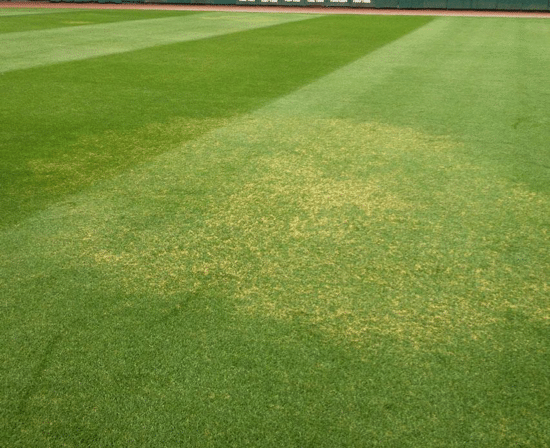
Dollar Spot Can Start Early: The dollar spot fungus (Sclerotinia homoeocarpanow named Clarireediasp) can produce infections on warm season grass as soon as they start to green up. Additionally, dollar spot can continue to infect cool season grasses anytime temps are above 50°F but it is fully active between 60°F and 70°F. Due to low temperatures, recovery of turf from dollar spot symptoms in late winter or early spring may take weeks rather than days. Therefore, preventive control of dollar spot is important at this time of the year. Monitoring fertility is an important first step to controlling dollar spot. Excessive moisture on turfgrass foliage will promote dollar spot epidemics. Excessive thatch layers and compacted soil stresses the plants and slows turfgrass growth and recovery from disease.
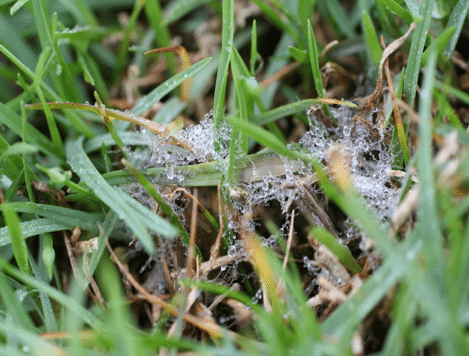
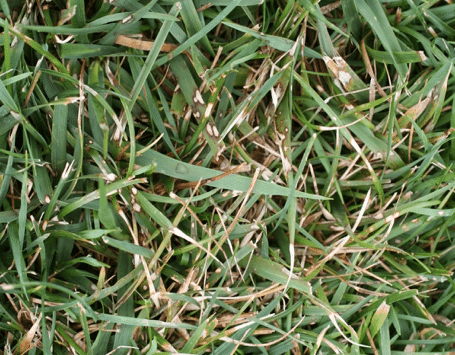
Chemical control for practitioners: A variety of fungicides are available to professional turfgrass managers for dollar spot control including fungicides containing benzimidazoles, demethylation inhibitors (DMI), carboximides, dicarboximides, dithiocarbamates, nitriles and dinitro-aniline. Several biological fungicides are now labeled for dollar spot control. For a complete and updated list of fungicides available for dollar spot, visit http://extension.uga.edu/publications/detail.cfm?number=SB28
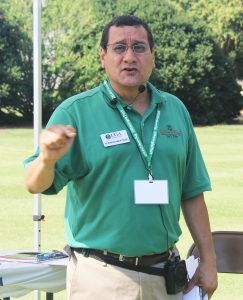 |
Alfredo Martinez is a University of Georgia Professor and Extension Plant Pathologist in the areas of turfgrass, small grains, and non-legume forages at the Griffin campus. |
- Landscape Alerts & Updates | September 2019 - September 20, 2019
- Landscape Alerts & Updates | June 2019 - June 20, 2019
- Landscape Alerts and Updates | April 2019 - April 20, 2019
